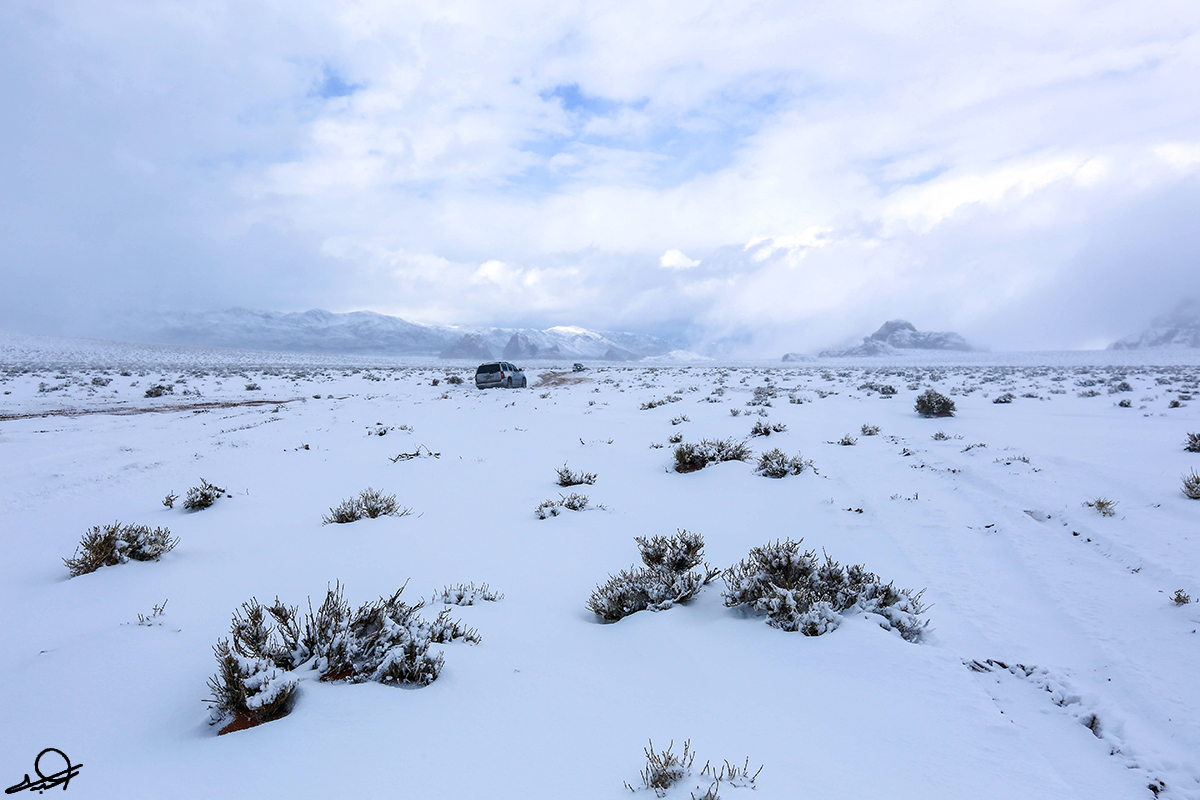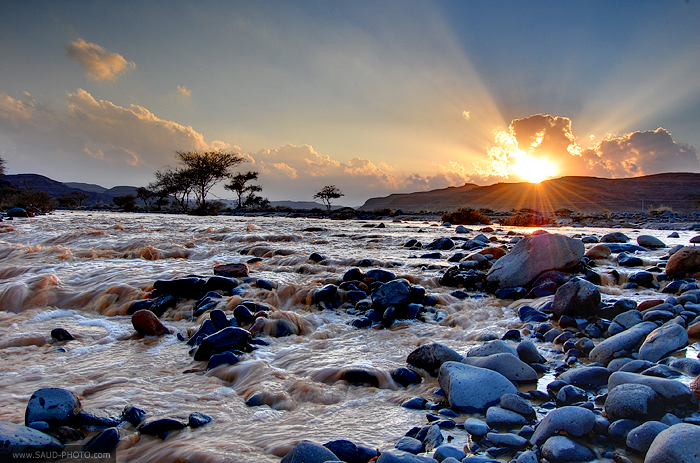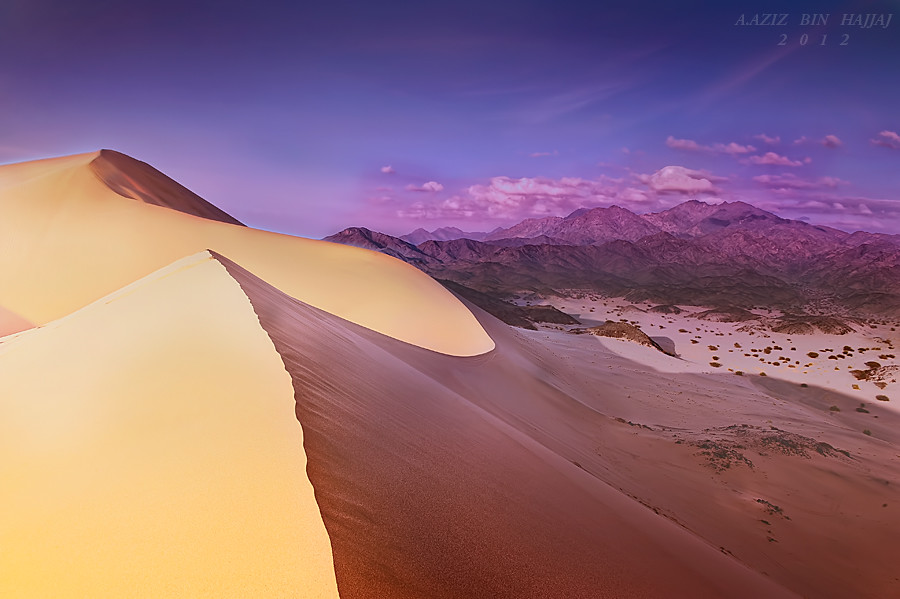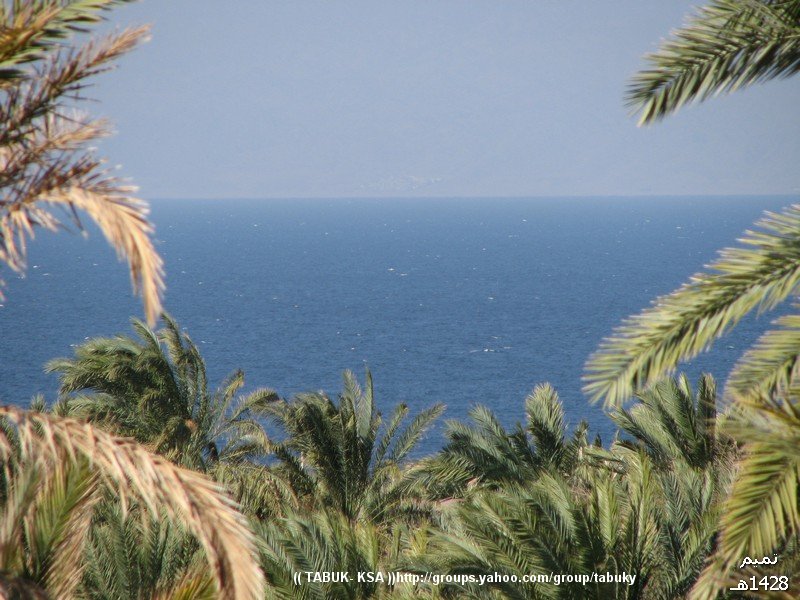Saudi Arabian innovation to power NEOM
Young engineers design project to generate electricity from passing car tires
The design involves ramp-steps integrated in the pavement with turbines operating to harvest energy from car tires passing over them.
Layan Damanhouri
Saudi Gazette
JEDDAH — A team of Saudi inventors came up with an innovation that can generate electricity for NEOM, the new $500-billion business and industrial zone coming up in the north of the Kingdom.
Inventor Meshal Al-Harasani announced the completion of the first phases of the invention, which is designed to produce electricity for a city from kinetic energy, or the energy from motion, of vehicles› tires passing on the road.
NEOM is a city for dreamers and it›s going to be a green and future-oriented place, said Al-Harasani who serves as counselor of the vice president for Business and Knowledge Creativity at King Abdulaziz University.
The future is in sustainable energy, he said, when asked about idea of the project.
It took two engineering teams to develop the project together. The design involves ramp-steps integrated in the pavement with turbines operating to harvest energy from car tires passing over them.
Energy generated from the pressure and speed of vehicles in traffic is then converted to electricity.
Currently, there are no similar technologies used in roads in the Kingdom for converting energy.
The Saudi-made invention was presented to Crown Prince Muhammad Bin Salman, deputy premier and minister of defense, who earlier revealed that the new zone would provide a new way of life and the highest sustainability standards.
Al-Harasani, who has previous patents and inventions, hopes this recent invention to reach worldwide and would be recognized as a patent by Saudi youth.
Nothing stops people from coming up with inventions, he told Saudi Gazette.
All they need is encouragement and mentoring. There are thousands of Saudi inventors today. Research centers, entrepreneurial bodies, and education sector plays a big role in producing new inventors.
He added: «With Saudi Vision 2030, our country is on its way to the first world. Our government believes in the Saudi youth. We are passionate about developing our country.
NEOM is said to drive the transformation of the Kingdom into a leading global hub through value chains of industry and technology.
http://saudigazette.com.sa/article/525401/SAUDI-ARABIA/Saudi-innovation-to-power-NEOM
Project NEOM - a highly ambitious and progressive megacity plan
As Saudi Arabia works reducing its economic dependency on oil, it recently launched the ambitious Project NEOM, which has the potential to be both progressive and positive for the region.
As part of the Vision 2030 strategy, as well as continued economic diversification efforts and job creation plans, the Kingdom of Saudi Arabia (KSA) has recently launched Project NEOM (‘NEO’ comes from the Latin word, meaning new, and the ‘m’ being an abbreviation of ‘Mostaqbal’, meaning future), a US$500 billion megacity project. With an area of about 26,500 sq.km. being allocated for the development, it covers three countries – Saudi Arabia, Egypt and Jordan. To put this into perspective, this equates to around 33 times the size of New York City.
The project was announced during the Future Investment Initiative in October 2017, and includes plans for resorts and holiday destinations along the Red Sea coast, as well as innovative, energy efficient and sustainable systems, buildings and infrastructures. This development is expected to create over 250,000 jobs and will contribute to KSA's GDP, which was expected to increase from 4.4% to 6.3% by 2020.
The development is backed by the Saudi’s Public Investment Fund (PIF). The PIF is a sovereign wealth fund owned by Saudi Arabia, founded in 1971 by royal decree to invest funds and provide financial support on behalf of the Government of Saudi Arabia, to projects of strategic significance to the national economy. It is expected that the PIF will provide the first capital investments for the project, enabling it to commence by 2019 and have a first phase completed by 2025.
The area is intended to be an international hub for trade, innovation and knowledge, and will focus on different industries including hospitality, entertainment, advanced manufacturing and biotechnology. Crown Prince Mohammed bin Salman has been explicit in his vision for this to be a world hub that is attractive for foreign funding. Investors from different sectors, including energy, water, biotechnology and robotics are expected to put more than half a trillion dollars into the region in coming years, and following the Kingdom’s announcement, Virgin founder Richard Branson has already expressed his intention to invest. Furthermore, the Russian Direct Investment Fund (RDIF) has expressed an interest in investing in this megacity.
The project’s primary focus is to turn 34,000km of Red Sea coastline into a luxurious tourist destination, and attract foreigners into the most conservative country in the GCC. NEOM will operate as an independent economic zone, with its own laws, tax structures and regulations, promoting economic growth and prosperity for its investors and residents. A number of promising initiatives relating to the project were announced in late 2017, which indicate that there is a marked intention for the region to become more liberal and open to Western norms. These include the Kingdom’s plan to issue its first tourist visas in 2018, the launch of entertainment projects such as theme parks, and the lifting of bans on women driving and public cinema. This approach, coupled with the intention to allow a mixed-gender working environment, will undoubtedly have a positive impact on a number of sectors, particularly tourism.
Once completed, this zone will offer an array of opportunities for local and international tourists, from exploring a nature reserve at the foothills of a dormant volcano nearby to scuba diving along the extensive coral reefs in the waters around the Red Sea at marine-orientated resort projects.
Ultimately, Project NEOM is considered to be highly progressive and very positive for Saudi Arabia, particularly in working towards its objective of diversifying the economy away from oil. The Kingdom is steadily gearing up towards attracting holidaymakers and investors alike, and has its sights set on potentially becoming one of the Middle East’s prime tourist destinations, as well as a global hub for innovation and trade.
https://www.linesight.com/insight/project-neom-a-highly-ambitious-and-progressive-megacity-plan
8 things you need to know about Saudi Arabia’s innovative NEOM project
NEOM is the world’s first independent special zone stretching over three countries set to become a destination located in the Northwestern region of Saudi Arabia. (Supplied)
NEOM is the world’s first independent special zone stretching over three countries. It is set to become a new vibrant destination located in the Northwestern region of Saudi Arabia. Expected to emerge as a leading global hub that exemplifies the future of human civilization by offering its inhabitants an idyllic lifestyle combined with exceptional economic prospects. NEOM seeks to attract top talent from around the world to push the boundaries of innovation like never before, and drive the growth of this zone and its residents.
1. Opportunity-rich developmental area
This special zone is located in the Northwestern region of Saudi Arabia and is set to include territory from within the Egyptian and Jordanian borders, to comprise a total area of 26,500 km2. NEOM will provide a plethora of unique development opportunities, as the project’s strategic coastal Red Sea location is notable for its:
Proximity to international markets and trade routes:
• Approximately 10% of the world’s trade flows through the Red Sea
• Connecting Asia, Europe, Africa and America, the zone will enable 70% of the world’s population to reach it in under eight hours
Temperate climate and diverse terrain:
• The unique geographical location of NEOM ensures a temperate climate, roughly about 10°C cooler – on average – than its surrounding areas, and the rest of the GCC. Cradled in a mountainous region that is home to breathtakingly diverse terrain in the North of Saudi Arabia, the area earmarked for the development also enjoys cooler winds coming in from the Red Sea for the best possible climate for future residents.
Incredible terrain that offers:
1) Untouched beaches with more than 460km of pristine coastline and several spectacular islands
2) Scenic mountains reaching up to 2,500km in height, with views across the Gulf of Aqaba and the Red Sea, where during parts of winter some are covered in snow
3) Idyllic and peaceful desert expanses that astound the visitors
Development from the ground up:
• The blank slate upon which NEOM is set to be developed provides unique opportunities. The fundamental distinction from traditional urban planning projects is the new technology that will be built into the blueprints of the infrastructural framework.
Richness in natural resources:
• Situated in an area rich in wind, and solar energy resources, the location of NEOM provides an ideal environment in which to develop renewable energy projects
• Perennial solar resources (20 MJ/m2)
• Ideal wind speed (an average of 10.3 m/s)
• The area is also rich in Oil and Gas as well as Mineral resources. The use of such resources will have to live up to the unmatched high sustainability standards.
2. Advantages of the project
NEOM offers unique opportunities and advantages to leading investors and business owners worldwide, with the aim of stimulating GDP growth in the Kingdom. This project offers potential investors:
• Direct access to the Saudi Arabian market and global markets, given its unique geographic location as a hub that links three continents
• Comprehensive supply and innovation systems
• Funding and financial incentives
• Favorable industry specific regulatory environment paired with international trade laws
• An infrastructural environment which puts the human first and technology in its hands to experience the future first
• Redirecting Saudi spend abroad back indirectly into NEOM. This is an incredible opportunity, as Saudis spend significant amounts on tourism ($15 billion), healthcare ($12.5 billion), education ($5 billion), and general investment abroad ($5 billion)
It also offers inhabitants:
• An idyllic living environment and rich quality of life
• Technology-based civil services in health, education, transport, entertainment, and other fields
• Advanced urban planning
• Many opportunities for employment and personal growth
• World-standard social norms in culture, arts, and education
3. Huge earnings for Saudi Arabia
The NEOM project is set to transform the Kingdom into a leading global innovation and trade hub through the introduction of value chains of traditional and future industries and technologies to stimulate local industry, private sector job creation, and GDP growth in the Kingdom.
4. Contributing to the realization of Vision 2030
Born from the ambition of Saudi Arabia’s Vision 2030 to see the country develop into a pioneering and thriving model of excellence, the NEOM project targets the achievement of the three following pillars of the Vision 2030:
A vibrant society
• A destination at the top of the world's most livable cities index
• Developing the information and digital sectors that contribute to the Kingdom's GDP
• The promise of becoming an aspirational society that demonstrates the future of human civilization, sought-after as a place to live and work by local, regional, and international talent
A thriving economy
• Favorable business environment and regulations
• Incentives for attracting foreign companies and investments
• Nine sectors aimed at diversifying the economy away from oil
• Strong contribution to the Kingdom's GDP and redirecting some of the leakage of overseas spend back into the base economy
An ambitious nation
• A vibrant destination that adopts technology in service of humanity
• The full utilization of digital technologies to increase government efficiency
• Leveraging the latest advancements in sustainability, connectivity, and mobility
5. Economic sectors
The NEOM project aims to develop nine key economic sectors for the future, in addition to the establishment of industries that curb economic leakage in the Kingdom, and the region in general. This will be achieved through the establishment of development funds, that will support these sectors, identified as:
• The future of energy and water: Includes being, fully powered by renewable energy, forward looking energy storage, and transport solutions as well as R&D and manufacturing. In addition, utilizing green technology in building water capabilities and maximizing usage efficiency
• The future of mobility: Includes seaports, airports, autonomous transport solutions such as autonomous vehicles/drones, and others
• The future of biotech: Includes biotechnology, human biotechnology, and pharmaceuticals manufacturing
• The future of food: Includes an international innovation center for food technologies, including seawater and desert farming, aeroponics, and hydroponics
• The future of advanced manufacturing: Includes new materials in composites and metals, 3D printing, robotics and vehicle manufacturing, and much more
• The future of media and media production: Includes the development of the television and film industry, the video gaming industry, digital content, and more
• The future of entertainment: Includes facilities, activities, sporting and cultural entertainment events, and others
• The future of technological and digital sciences: Includes artificial intelligence, virtual reality and augmented reality technologies, data centers, the Internet of Things, and e-commerce
• The future of living as NEOM’s foundation: Includes housing, education, security and safety, green spaces, health care, hospitality, hotels, and others
6. World-class quality of life
NEOM is positioned to become an aspirational society that denotes the future of human civilization by offering its inhabitants a lifestyle that surpasses that of any other metropolis, through the development of a unique societal experience that encompasses:
• Favorable business environment: Offering systems conducive to investment
• Idyllic living environment: Offering a comfortable and enjoyable community with the highest quality of life that includes a combination of beautiful beaches and mountains and untouched land, along with best in class education, arts and culture facilities.
• Continental demographics: Offering a multicultural environment that nurtures a proactive and diverse community
• World-class education: Offering high quality education that caters to everyone at all stages of development
• Transport: Offering fast and efficient mobility across NEOM
• Comfortable housing: Offering ample housing and facilities for everyone
• Stability: Offering a safe, secure, and stable society
• Healthcare: Offering world-class healthcare facilities, using advanced capabilities to provide an all round service
7. Main futuristic concepts
The futuristic vision of the project comprises six main pillars that will be adopted across NEOM
• Human beings as a top priority: NEOM provides its residents with comfortable living conditions set within an idyllic society that promotes inclusion and encourages personal growth and lives by world-class social norms
• The next generation of healthy living and transport: NEOM will allow its residents to reach many locations via walking or biking and also have an unprecedented transportation infrastructure, build on future transportation technologies
• Automated services/ E-Government: NEOM government services will be fully automated and most easily accessible to its residents
• Digitization: NEOM will provide its residents “digital air”, free highest-speed internet and free online continuous education at their fingertips
• Sustainability: NEOM will be solely powered by renewable energy and buildings will have a net zero carbon footprint
• Innovation in construction: Serving as a laboratory for innovative construction techniques and materials operating with complete flexibility to meet future requirements
8. Economic Earnings
One of the project’s main advantages is the redirection of the Kingdom’s economic leakage back to the country:
• Net imports to the Kingdom: The nine sectors outlined for development will return about $70 billion in revenue back into the Kingdom, by way of commodities currently imported from abroad, through the potential of local production of vehicles, machinery and communication equipment.
• Investments abroad: The project will provide new opportunities in previously non-existent sectors for Saudi Arabian investors, within an environment that adopts favorable business laws and a system conducive to growth. Thus, part of the investment leakage issue will be addressed.
• Saudi consumers overseas spending: NEOM will offer a new local tourist destination for Saudi citizens to visit, while ensuring that their capital is injected back into the local economy.
NEOM will be back by more than $500 billion over the coming years by the Kingdom of Saudi Arabia, the Saudi Arabian Public Investment Fund, local as well as international investors. NEOM’s contribution to the Kingdom's GDP is projected to reach at least $100 billion by 2030, in addition to its per capita GDP – projected to become the highest in the world.
For further information on NEOM please visit DISCOVERNEOM.COM
http://english.alarabiya.net/en/bus...t-Saudi-Arabia-s-innovative-NEOM-project.html
Must watch



 "Bankrupt" very, very soon.
"Bankrupt" very, very soon.










 Saudi Arabia - Tabuk ,
Saudi Arabia - Tabuk , Saudi Arabia. Tabuk 2010
Saudi Arabia. Tabuk 2010





























